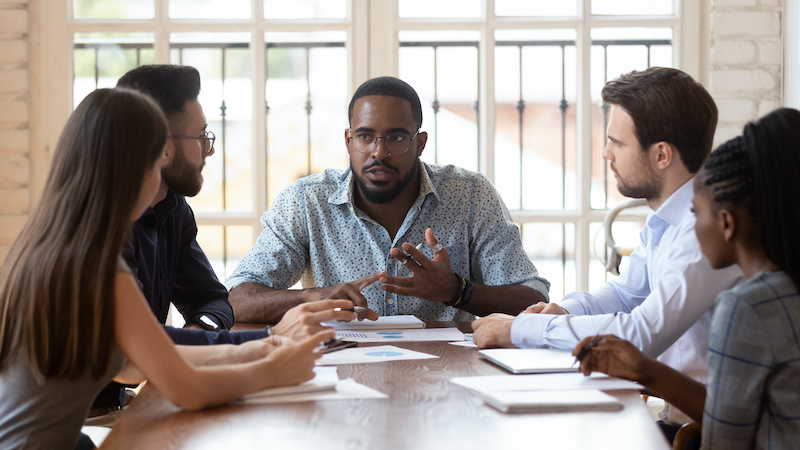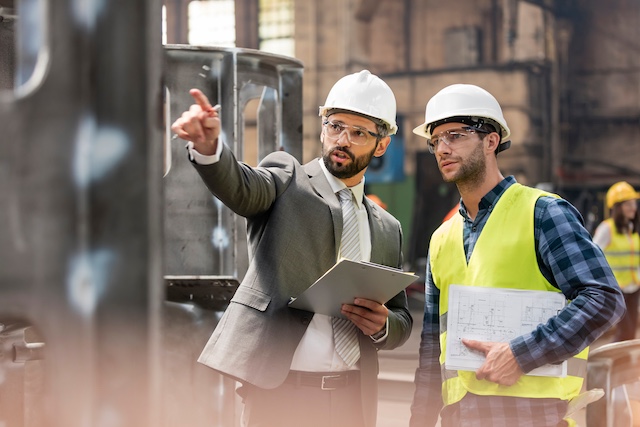Layoffs can create fear and doubt among employees, lower morale, and reduce their trust in you as an employer. You may wonder how to support remaining employees after a layoff and keep them engaged. How can you motivate your workforce and maintain loyalty after their colleagues depart your organization? Read on for five tips that can help you strengthen your team.
5 Tips: How to Support Remaining Employees After a Layoff
Be transparent in your communications
Oftentimes, the stress and anxiety that befall remaining employees after a layoff comes from uncertainty around the reasons for why the layoffs happened and how those who departed were selected. To mitigate those negative effects, clearly and sensitively communicate why the layoffs had to take place, how employees were selected for layoffs, and what your organization is doing to move forward in order to be solvent, productive, and profitable.
Remaining employees may also feel survivors’ guilt (also known as layoff survivor sickness and workplace survivor syndrome) and concern for the welfare of their former colleagues. You can help alleviate those feelings by explaining the benefits you offered those who were laid off in order to ease their transition out of the company, such as severance pay, continuing healthcare benefits, and outplacement to assist them in finding new employment.
Offer career development opportunities
Those who are left behind after a layoff may worry that they will lack career opportunities with your organization going forward. The best way to respond to those concerns is to offer opportunities for career growth. Even while making cuts to maintain profitability, there are cost-effective solutions to help your team with career development.
You can increase engagement within your workforce by giving them a path for growth with career coaching, upskilling and reskilling courses, mentorships, and transparency around available opportunities within your organization. Providing ways to employees to increase their knowledge, skills, and experience with you can not only motivate them but also help them better respond and adapt to future challenges and changes within the company. Expanding the diversity of knowledge within your organization will also help create an agile workforce that will ensure you rebound faster after any future disruptions.
 Survey employees to understand their concerns and priorities
Survey employees to understand their concerns and priorities
While it’s a reasonable expectation that employees will be worried about their job security and the future of the company after layoffs, they likely have additional concerns that are more specific to their roles or departments. Surveys are a way to not only uncover what your employees are thinking about, but also to show that you are listening and care about their opinions and interests.
As with the layoff communications, be transparent when presenting the survey to your workforce to explain why it’s being offered and how the responses will be used. It’s then important that you share the results with employees and take steps to respond to their concerns and needs, whether that means making improvements and/or changes or holding meetings with them to find solutions.
Check in with employees to address and prevent burnout
The elimination of roles at a company can add to remaining employees’ responsibilities and workloads and create burnout. Since you want to be able to retain your existing workforce, it’s important to frequently check in with them at the organizational, departmental, and individual level. Immediately following a layoff will be an adjustment period, where those affected may require time to adapt to new responsibilities and/or learn new skills and/or processes. It’s important to support remaining employees through these challenges by asking them what they need to be successful during the transition and providing them tools, such as training and mentorship, or flexibility around work schedules.
Managers may end up with additional direct reports and will also need support, whether that means redistribution of some of their responsibilities, or help with prioritizing projects in order to achieve goals without exhausting themselves and their resources.
 Facilitate workshops to help leaders and teams effectively manage change
Facilitate workshops to help leaders and teams effectively manage change
Demonstrate that you, as an employer, understand the challenges your remaining employees are facing and that you wish to smooth the transition as much as possible. As an example, you can support an agile workforce by providing resilience workshops for both managers and team members. Such workshops can offer strategies to strengthen one’s personal resilience, as well as that within a team, so that those within a department can work together to overcome any adversities presented by change.
Sometimes employees may not realize that they have the tools within themselves to persist after a layoff or other unexpected event. Offering a chance to learn about themselves and resilience resources can help them trust in their abilities and also value you as a caring employer.
The Takeaway
Layoffs will always create some challenges for a company after they occur. However, by implementing support strategies for your remaining employees, such as the ones listed above, you can mitigate the negative impacts and help your workforce move forward.
Additional Resources
- Understand how best to communicate the news of a layoff to your remaining employees by reading Communicating Layoffs to Remaining Employees in 5 Steps.
- Read about 2 Strategies to Include in Your Change Management Plan to help prepare you for additional workforce changes.
- Learn additional strategies for How to Retain Talent in Times of Change.
In every stage of the employee lifecycle, INTOO helps employers protect their brand through effective candidate experience, career development, and outplacement services. Contact us to learn how we can make a difference for you and your employees.
Robyn Kern is a seasoned business writer who has written in the HR, education, technology, and nonprofit spaces. She writes about topics including outplacement, layoffs, career development, internal mobility, candidate experience, succession planning, talent acquisition, and more, with the goal of surfacing workforce trends and educating the HR community on these key topics. Her work has been featured on hrforhr.org and trainingindustry.com.


 Survey employees to understand their concerns and priorities
Survey employees to understand their concerns and priorities Facilitate workshops to help leaders and teams effectively manage change
Facilitate workshops to help leaders and teams effectively manage change








